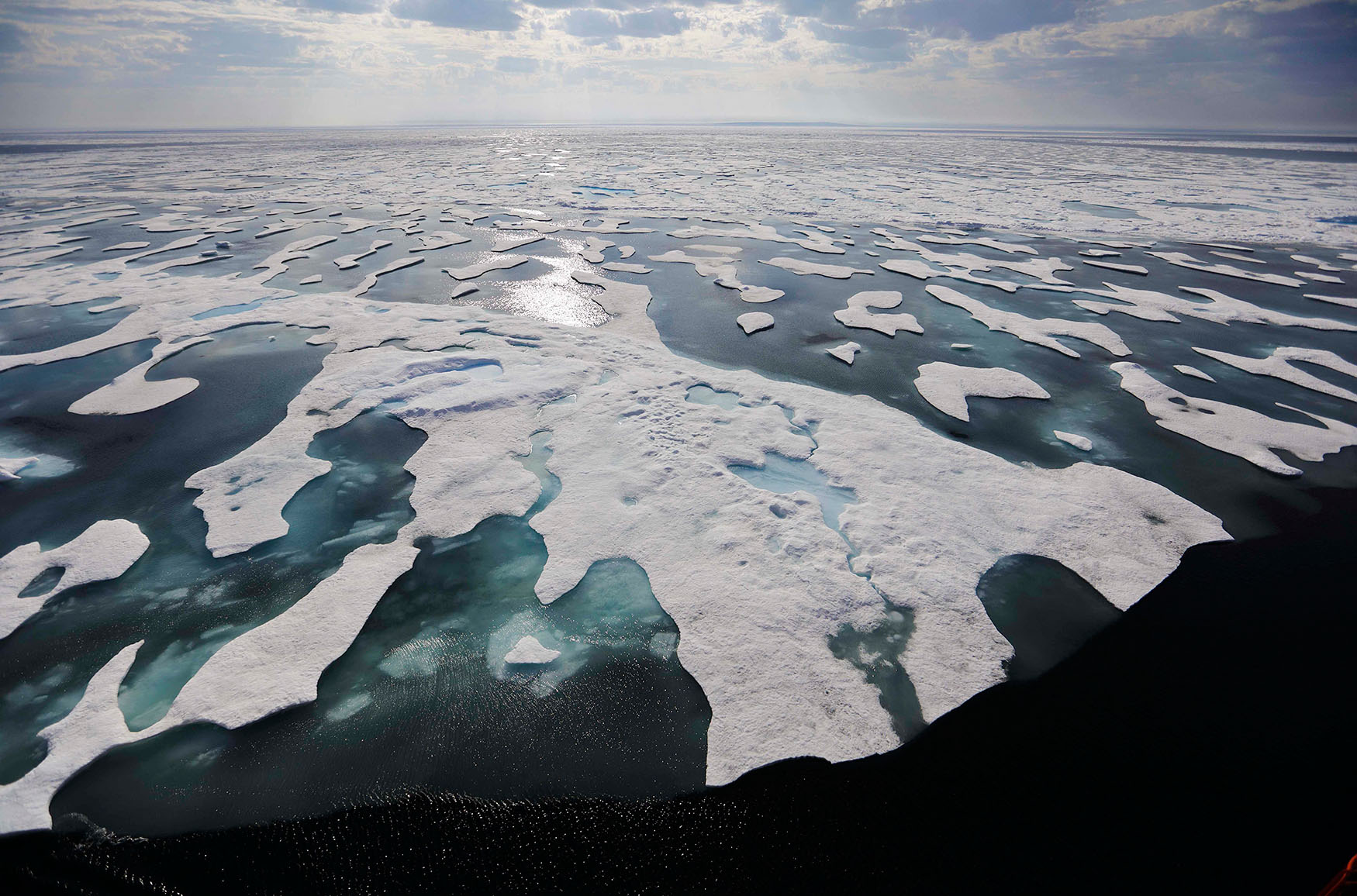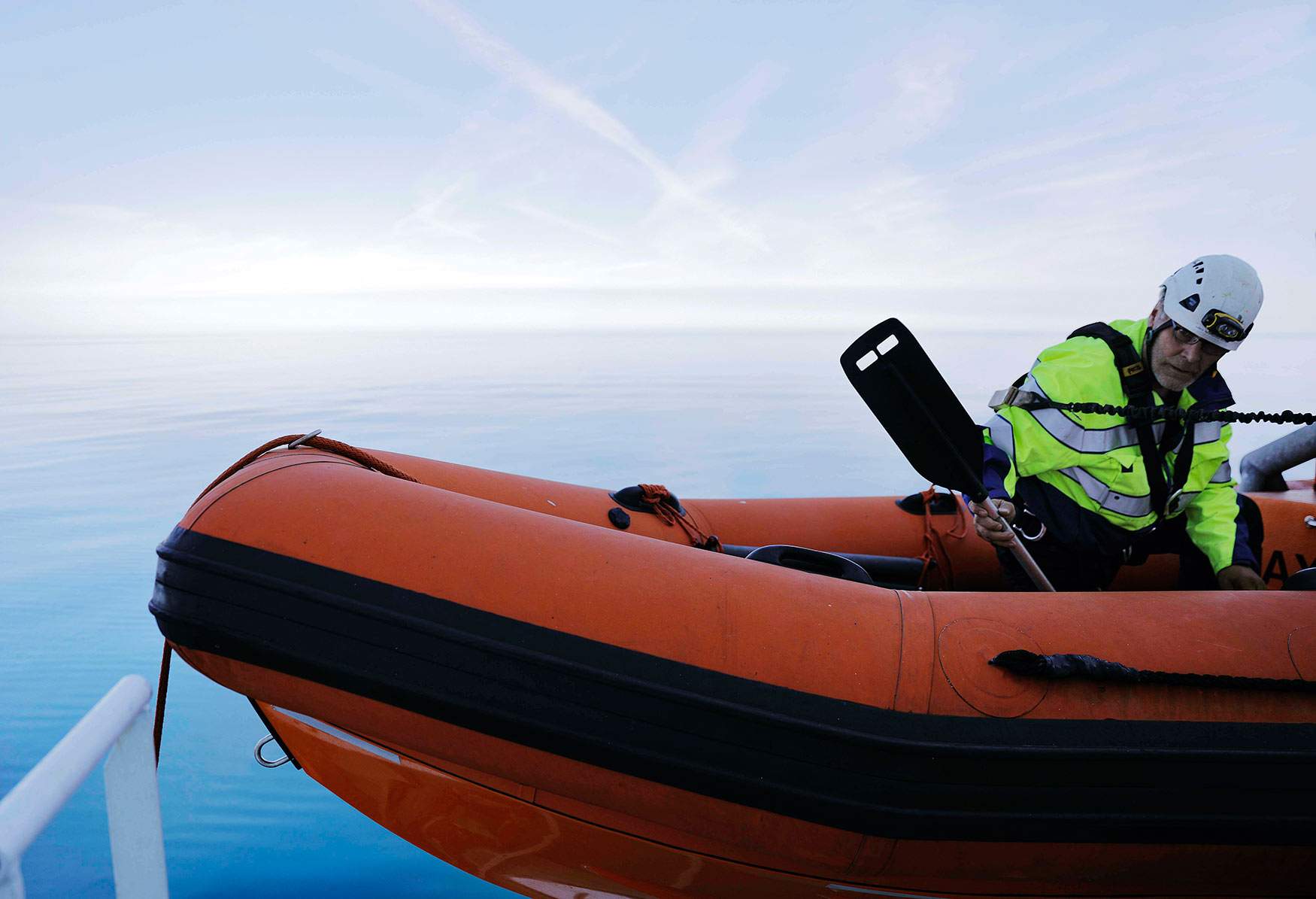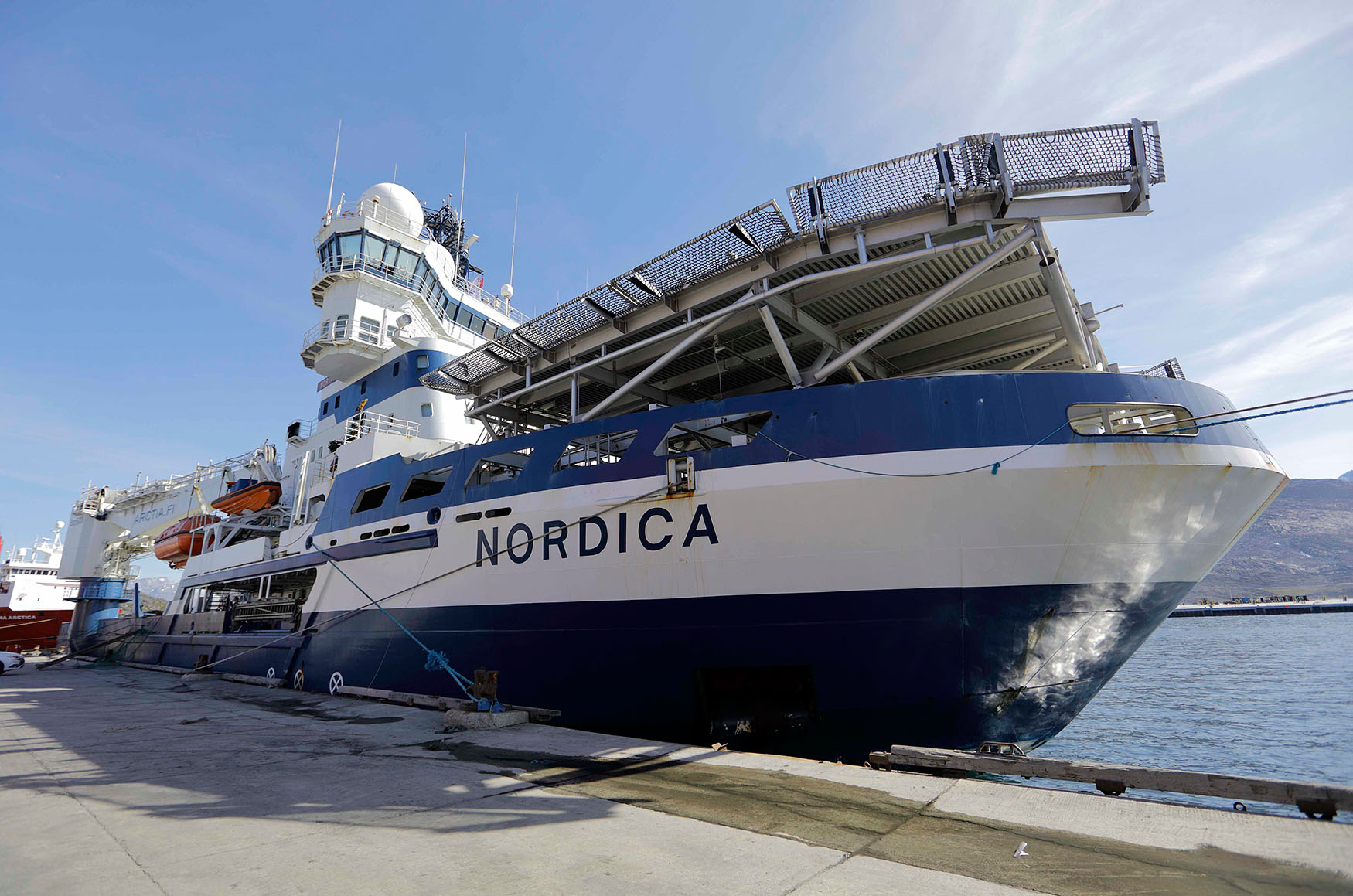How loss of Arctic sea ice further fuels global warming

For much of the year, the Arctic appears as a crumpled white sheet of ice and snow before great chunks break off around the edges in spring, forming a sea of floes that gently dance across the frigid waters.
The floating ice slowly shrinks throughout summer until another winter season starts.
Because of global warming, more sea ice is being lost each summer than is being replenished in winters. Although sea ice is likely to continue forming each winter, it may be restricted to even higher latitudes.
Less sea ice coverage also means that less sunlight will be reflected off the surface of the ocean. The water will absorb more heat, further fueling global warming.
Sea ice forms when the top layer of water reaches freezing point, usually around the start of October. As temperatures continue to fall, this first-year ice grows downward until it is several feet thick. If the ice survives the following summer melt, it becomes second-year ice. Another cycle and it becomes multi-year ice — which is the toughest kind.
Sea ice plays an important role in the global climate system by cooling the surrounding water and air. It helps maintain ocean and atmospheric currents that affect weather that is characteristic for certain parts of the world, such as the comparatively mild temperatures found in western Europe.
Second officer Juha Tuomi looks out from Finnish icebreaker MSV Nordica as it sails into floating sea ice on the Victoria Strait while traversing the Northwest Passage in the Canadian Arctic Archipelago, Friday, July 21, 2017. Sea ice plays an important role in the global climate system by cooling the surrounding water and air. (AP Photo/David Goldman)
Sea ice cracks as the Finnish icebreaker MSV Nordica passes through the Victoria Strait along the Northwest Passage in the Canadian Arctic Archipelago, Friday, July 21, 2017. Sea ice helps maintain ocean and atmospheric currents that affect weather which is characteristic for certain parts of the world, such as the comparatively mild temperatures found in western Europe. (AP Photo/David Goldman)
The sun sets over melting sea ice on Peel Sound along the Northwest Passage in the Canadian Arctic Archipelago, Sunday, July 23, 2017. Because of global warming, more sea ice is being lost each summer than is being replenished in winters. Although sea ice is likely to continue forming each winter it may be restricted to even higher latitudes. Less sea ice coverage also means that less sunlight will be reflected off the surface of the ocean in a process known as the albedo effect. The oceans will absorb more heat, further fueling global warming. (AP Photo/David Goldman)
Chief engineer Jukka-Pekka Silander watches from the bow of the the Finnish icebreaker MSV Nordica as it sails into floating sea ice on the Beaufort Sea off the coast of Alaska while traversing the Arctic's Northwest Passage, Sunday, July 16, 2017. Sea ice plays an important role in the global climate system by cooling the surrounding water and air. It helps maintain ocean and atmospheric currents that affect weather which is characteristic for certain parts of the world, such as the comparatively mild temperatures found in western Europe. (AP Photo/David Goldman)
The Finnish icebreaker MSV Nordica sails through sea ice floating on the Beaufort Sea off the coast of Alaska while traversing the Arctic's Northwest Passage, Sunday, July 16, 2017. Because of global warming, more sea ice is being lost each summer than is being replenished in winters. Although sea ice is likely to continue forming each winter it may be restricted to even higher latitudes. Less sea ice coverage also means that less sunlight will be reflected off the surface of the ocean in a process known as the albedo effect. The oceans will absorb more heat, further fueling global warming. (AP Photo/David Goldman)
Researchers look out from the Finnish icebreaker MSV Nordica as the sun sets over sea ice floating on the Victoria Strait along the Northwest Passage in the Canadian Arctic Archipelago, Friday, July 21, 2017. Sea ice plays an important role in the global climate system by cooling the surrounding water and air. It helps maintain ocean and atmospheric currents that affect weather which is characteristic for certain parts of the world, such as the comparatively mild temperatures found in western Europe. (AP Photo/David Goldman)
The sun sets over sea ice floating on the Victoria Strait along the Northwest Passage in the Canadian Arctic Archipelago, Friday, July 21, 2017. Sea ice forms when the top layer of water reaches freezing point, usually around the start of October. As temperatures continue to fall this first-year ice grows downward until it is several feet thick. If the ice survives the following summer melt it becomes second-year ice. Another cycle and it becomes multi-year ice _ which is the toughest kind. (AP Photo/David Goldman)
A bird flies above sea ice on the Victoria Strait along the Northwest Passage in the Canadian Arctic Archipelago, Friday, July 21, 2017. Sea ice forms when the top layer of water reaches freezing point, usually around the start of October. As temperatures continue to fall this first-year ice grows downward until it is several feet thick. If the ice survives the following summer melt it becomes second-year ice. Another cycle and it becomes multi-year ice which is the toughest kind. (AP Photo/David Goldman)
Follow the AP reporting team as they sail through the Arctic Circle’s fabled Northwest Passage on an icebreaker to document the changes global warming has wrought in one of the world’s most fragile environments: New Arctic on AP News
Text from the AP news story, How loss of Arctic sea ice further fuels global warming, by Frank Jordans.
Photos by David Goldman
Video by David Keyton
Visual artist and Digital Storyteller at The Associated Press





